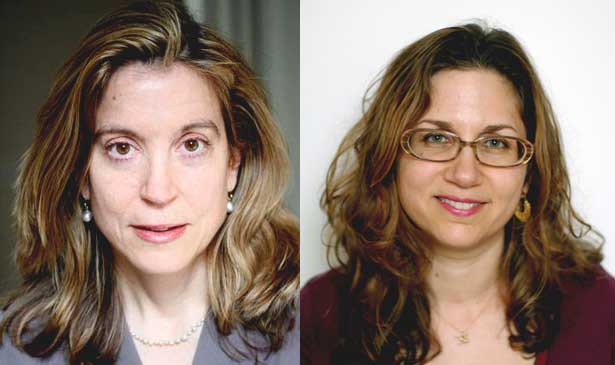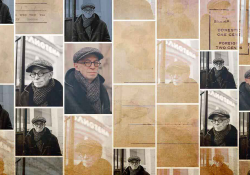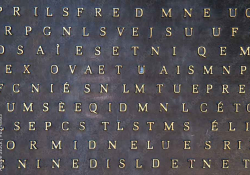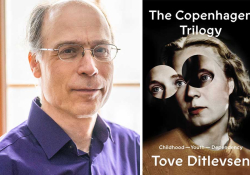Part 2: The Translators behind In Translation: A Conversation with Esther Allen and Susan Bernofsky

This week’s Translation Tuesday features the second half of our interview with Esther Allen and Susan Bernofsky, the editors of the new collection In Translation: Translators on Their Work and What It Means (published in May 2013 by Columbia University Press). Read the first half of the interview or read the full text here.
On dialect:
Arthur Dixon: How do you deal with questions of dialect in translation? For example, Esther, if a book were written in distinctly Argentine Spanish, would you take that into account when translating to English?
Esther Allen: Spanish is an interesting and unique case. American English is so steeped in it at this point that, as Forrest Gander’s poetry translation technique suggests, you can do things with Spanish you might not be able to do with other languages—at least in the US. I recently had an argument with a colleague from the UK as to whether the word campesino can be used in English; he said not, and I pointed out that it’s used frequently in the New York Times.
My road map for this kind of thing is Francisco Goldman’s magnificent novel Ordinary Seaman, written in English, yes, but interwoven with half a dozen regional varieties of Central American Spanish slang, each with its own nuances, explored and discussed in the text. There also tends to be a lot of preexisting polyglossia in regional Latin American fiction, which often incorporates indigenous languages. My translation of Rosario Castellanos’s Book of Lamentations needed to include a glossary of the novel’s Tzotzil terms at the end, which made it easy to incorporate characteristic bits of Mexican Spanish into the English as well. My current project, Antonio Di Benedetto’s Zama, involves regional Southern Cone Spanish—how did you guess?—but it’s eighteenth-century colonial Spanish to boot, with a lot of Paraguayan indigenous languages thrown in. The problem there was having the characters use a somewhat formal period language without making them sound British. I tried looking at accounts by anglophone travelers who visited the region in the late eighteenth century, and found an early-nineteenth-century translation by John Adams of Ulloa’s account of travel in South America particularly helpful as a guide for how to work Spanish into the fabric of the text without making it sound like, well, Francisco Goldman.
AD: Referring to Jason Grunebaum’s essay on “choosing an English for Hindi”: in your experience, which specific variety of English is best to use for translation? Should translators be concerned with dialectical differences or simply translate into English as they speak it, or should they translate to a deliberately blank dialect of English (as David Bellos mentions)?
Susan Bernofsky: Jason is in a unique situation because he’s so conversant in the varieties of English spoken in India as well as those of the US, and these differences are crucial in his translations from the Hindi because he has to assume an Indian readership as well as readers in other parts of the English-speaking world. The question of dialectical differences comes up a lot for me because I’ve translated a number (seven!) of books by Robert Walser, who often inflects his German with a Swiss accent to ironic or humorous effect. One might look for cultural “equivalents” and slip into Cockney, say (for a UK translator), or some sort of US regional slang. The playfulness of Walser’s using dialect has to do with the traditional marginalization of Swiss language and literature within the dominant German context, so you would have to look for the dialect of a somehow marginalized group in English also. But every instance of marginalizing has its own history and its own cultural specificity, so a translation that uses a dialect automatically “layers” the history of one marginalized group over another, and that is almost always inappropriate. So instead I try to approximate the effect Walser is going for by slipping in “folksy” or “quaint” expressions, or sometimes I even keep the Swiss words with glosses (since Walser often glosses his Swiss words for his German audience—sometimes intentionally inaccurately!). As for the “deliberately blank” dialect of English Bellos speaks of: yes, I think he’s onto something. It’s impossible to eliminate all traces of American or British inflection from one’s English, but I do take pains to avoid outright Americanisms whenever possible, since I want to do everything I can to maintain the illusion that I am writing German in English.
On women and translation
AD: In a recent article for Words Without Borders, Alison Anderson observed that “over the last two years, an average of 26 percent of the books of fiction or poetry [in translation] published in the United States were by women.” Is the underrepresentation of women an institutionalized aspect of literary translation?
EA: Alison Anderson’s excellent and very pertinent article points out that the problem of female authorship isn’t limited to translation: women writers working in English get short shrift in the anglophone literary marketplace in a variety of ways, as documented on Vidaweb.org and other sites.
Ruth Franklin in The New Republic looked at Fall 2010 catalogs from thirteen US presses, large and small, and found that only two had a ratio of books by women above 30 percent. Three were at 30 percent, and in the remaining eight catalogs 25 percent or fewer of the books were written by women. Only 15 percent of the books in the Harvard University Press catalog were by women.
It’s probably a safe assumption that women writers in most of the rest of the world are having an even tougher time publishing their work than anglophone women. At that point, the fact that 26 percent of the books we’re translating into English are written by women starts to look pretty good; we’re giving women in the rest of the world parity with what women writers in English have achieved.
It’s a global issue and one we need to remain acutely aware of. It is shocking to learn that the Independent Foreign Fiction Prize has never in its history gone to a book by a woman—and time to add that prize to the many lists on one of my favorite blogs, “100 Percent Men.”
However, we should also remember to celebrate our triumphs. Anderson’s article doesn’t mention her spectacularly successful translation of Muriel Barbery’s The Elegance of the Hedgehog—a book by a woman that sold more than a million copies in English translation.
On technique and meaning
AD: Here’s the classic translation question. Which is more important: fidelity or transparency?
SB: The thing about “fidelity” is that the more you talk about it, the blurrier it gets as a concept. When most people use the word, they mean “faithfulness to the semantic content of each sentence,” which is exactly what Helen Lowe Porter was after when she chopped up Thomas Mann’s long sentences into bite-sized pieces. (I count up to ten English sentences for each German one in her translation of the story “Disorder and Early Sorrow,” for example. Whose idea of fidelity would that be nowadays?) When most people talk about “transparency,” they mean taking stylistic oddities of the original into account and re-creating them to some extent in the target language. But obviously you can’t have the one without the other. Literary texts are never just “about” their informational content. I think it’s more useful to set this dusty old duality off to one side and begin to think about all the aspects of a text we might think about asking a translator to render, keeping in mind that the mix will look different for every author and every work. I like Anthony Appiah’s suggestion that a translator strive to communicate what about the original text made it worth teaching. Not a simple formula, a complex one.
AD: Alice Kaplan writes, “Like a simple melody on the piano, a simple prose style in the original exposes the translator. It can be much harder to play.” Is it really harder to translate simple language?
EA: In language, nothing is simple—if it were, then human life wouldn’t be what it is, and Google translate could dictate our every communication. Think of the word “get”—a very simple three-letter word, yet its meaning is virtually unlimited (get off, get up, get out, get along, get with, get away, get to, get over, etc.). The longest entry in the Oxford English Dictionary is for the verb “put.” If you print it out from the online version, it’s 203 pages. 203 pages!
One of our contributors, Eliot Weinberger, has a marvelous book I’m very fond of called Nineteen Ways of Looking at Wang Wei, which takes a number of different approaches to the translation of a four-line Chinese poem written 1,200 years ago about a glimpse of a mountainside and a ray of sunlight that, in its extreme simplicity, lends itself to infinite interpretation. The greatest challenges in any translation are not obscure words or convoluted syntax (though those can pose extreme difficulties), but the simple locutions with a precise and perfect meaning that you grasp very well yet cannot find a way to fully convey in the target language.
AD: Susan, your essay deals with the revision of syntax, rhythm, and other technical literary elements in translation. How much time does a translator devote to these matters compared to simply capturing meaning?
SB: I’m sure this is different for every translator. For me, “capturing meaning” is only around 10 percent of the translation process, except in cases where a passage is particularly knotty or hard to figure out. Of course, if you’re working with something like a very dense, hermetic poem, you’re going to spend much more time just trying to figure out exactly what’s going on semantically as well as on other levels. There’s a “massaging” part of the process that lasts a very long time for me. What I mean by that is that you keep changing a sentence or line around—putting words in different sequences, trying out different synonyms or phrases—until you arrive at something that both sounds interesting in a way appropriate for the work and author and says what it’s supposed to say. This part of the translation process is a bit mysterious, or might seem so until you start asking the same questions, say, of a musician (“How do you figure out the right way to play a phrase?”) and realize that the challenges faced in many different sorts of art-making aren’t all that different from each other in the end.
On the translator’s status
AD: Several of the essays in your book touch on the issue of hierarchy between translators and authors, with translators typically on the lower rung. What are your thoughts on the difference in status between translators and authors? Why is the translator’s status lower in Western countries than in certain other places, like Japan?
EA: Translators in the anglophone world are sometimes perceived as being on a “lower rung.” The essays in our book certainly don’t subscribe to that view. Would we say that an actor is on a lower rung than the screenwriter who wrote the lines the actor delivers? Or that the literary critic is on a lower rung than the writers whose works she analyzes? The contributors to our book all write and translate and have made careers that conjoin the two practices—that conjoining is what many of the essays we’ve included are fundamentally about.
As Ted Goossen describes it in his contribution, translation is an integral part of Japanese literary culture because “the founders of Japanese modern literature tended to be either scholars of Western literature or translators.” This tendency is rooted in the earlier centuries-long efforts by Japanese scholars who struggled to match Chinese characters and Japanese words, and labored over legal documents written in Dutch to defend their territorial rights. While it remains rarer for translation to be a fundamental component of a literary career in the anglophone world, there are nevertheless many examples of such careers. Lydia Davis, just awarded the Man Booker International Prize, is an excellent one. She is our domestic parallel to Haruki Murakami—an internationally renowned and best-selling writer who also translates prolifically. We were privileged indeed to include his essay on his translation of The Great Gatsby in the book.
On technology and the future
AD: What tools do you find more useful for translation? What impact do you think online language tools will have on literary translation?
SB: I have come to make heavy use of online tools as a translator, but I caution my students about depending too much on them. I think having grown up translating only with the help of paper dictionaries and reference libraries has made me a more discerning user of online tools than someone who starts off using them right from the start. First of all, online dictionaries tend to offer many fewer options (both in terms of synonyms offered as potential translations of a word and in terms of the various shades of meaning of the words in the original language). The information also tends to be randomly presented, whereas a good old-fashioned paper dictionary will offer an organized overview of a word’s subdefinitions and then list some English-language synonyms for each. The Internet offers us huge masses of data, but it isn’t sorted and organized, and often the organization is crucial when it comes to finding the right words in English. Similarly, I have never found an online resource as helpful as a good Roget’s International Thesaurus with an index, i.e. not the one in dictionary form, but the one that sorts words by categories and lists verbs and adjectives right after the nouns associated with them. This is a highly powerful and refined tool. The one thing the thesaurus doesn’t do for you is sort the words chronologically (by the date they entered the language), but for that there is the “historical thesaurus” now incorporated into the online Oxford English Dictionary, easily my favorite online tool. Speaking of history, if you’re translating older works, you absolutely need older paper dictionaries because words go out of fashion and get dropped from dictionaries, and the synonyms you’ll find in a nice old Webster’s New International Dictionary (that’s the second edition of the biggest one Webster’s makes) are a useful reminder of how people talked eighty or a hundred years ago. Speaking of which, I’m a big fan of GoogleBooks as a tool for checking the idiomaticness of phrases, especially since you can limit your searches by dates to see when a certain phrase started popping up. It works for lots of languages, especially English. And Google Images and Wikipedia are great at finding out what plants, pieces of furniture, etc. are called in various languages, especially once you start using the language tabs along the left-hand edge of each Wikipedia page to toggle you to and from the language you’re translating from. The Internet keeps giving us more and more tools to add to our arsenal. It’s just important not to throw away the old tools as we add the new ones, since the functionality of good, big dictionaries has still not been replaced.
EA: That’s great advice and a superb list of tools, to which I’ll add just two. First, the Google Ngram viewer, which graphs and compares the frequency of various terms over time, and which is also really useful for charting British English against American English. If you compare the usage of “bloody” and “damned” in British English from 1800 to 2000, you can see that “bloody” generally occurs far more frequently in the corpus, except from 1925 to 1930 when the two terms are neck and neck. If you do the search with American English, the two terms are in largely the same relation except that the period when their usage is about equal is 1930–40. It could be really useful to know that! Of course, you also have to keep in mind that “bloody” is not only an expletive attributive but a simple descriptive adjective, as well, and the Ngram machine is incapable of distinguishing between those two usages. Another tool that my translation students for whom English is a second language find particularly indispensable is www.linguee.com—which takes a phrase in one language and locates the myriad ways it has been translated in an endless number of different contexts. It’s incredibly helpful for determining which preposition is required and how various prepositions alter meaning, how precisely the word is generally used in a sentence, etc.
AD: As the world globalizes, will there be more or less translation?
EA: Well, that’s the big question, right? We’re obviously arguing for more. Lots of people seem to disagree, in favor of the option memorably described by Michael Cronin (in a passage we cite in our introduction) as “the dystopian scenario of the information-language nexus [that] would see everyone translating themselves into the language or languages of the primary suppliers of information and so dispensing with the externality of translation.”












